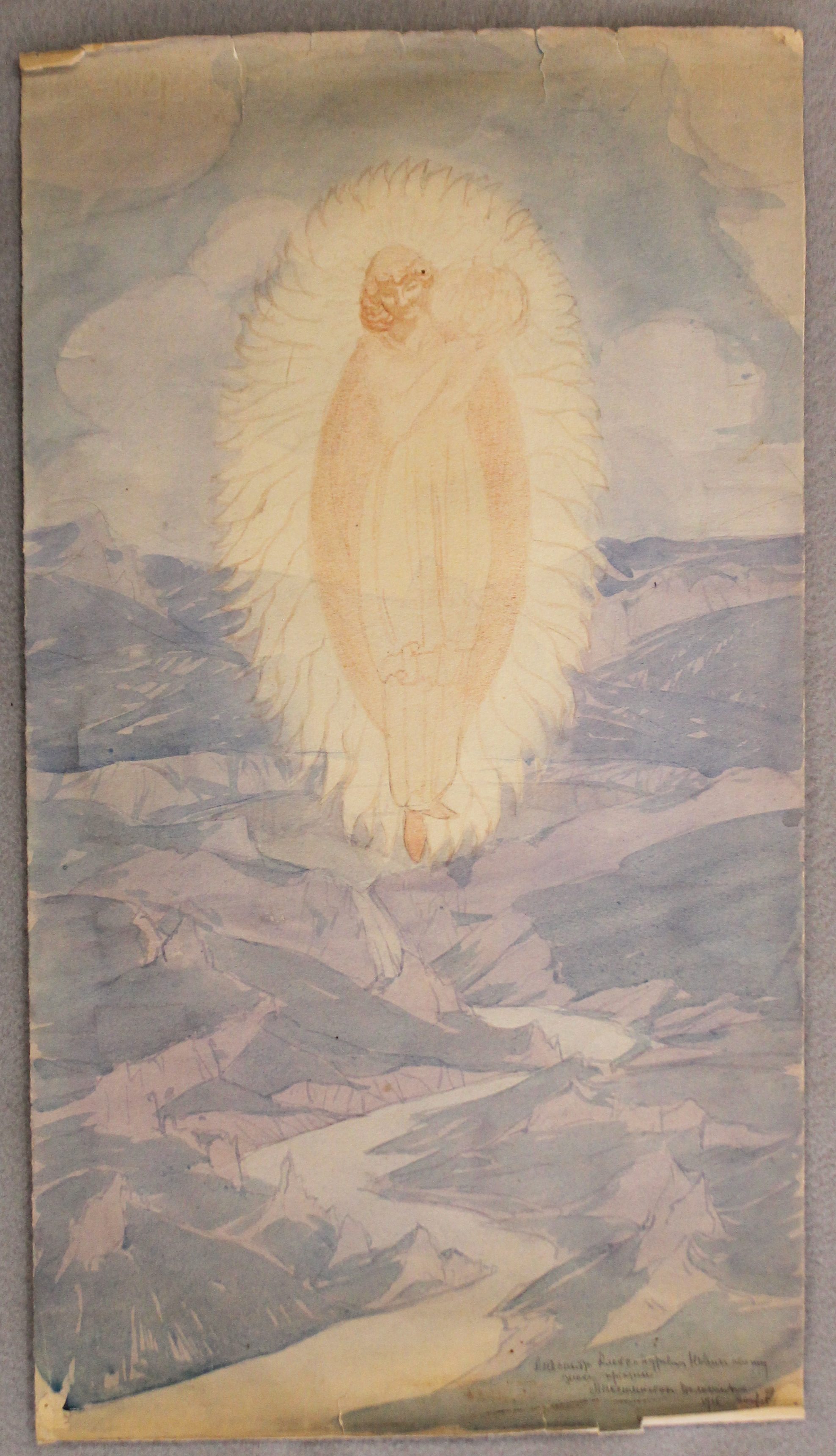Archive
First Russian émigré artists in Istanbul exhibition
First Russian émigré artists in Istanbul exhibition
Word Count: 7
- First Russian émigré artists in Istanbul exhibition
- Exhibition
- 09-10-1921
- 10-10-1921
The first Russian-speaking émigré artists in Istanbul exhibition was a one-day event but its success led to the formation of the Union and paved the way for other exhibitions.
Word Count: 29

Portrait of the poet Maximilian Voloshin (one of the representatives of the Symbolist movement in Russian culture and literature) by Boleslav Cybis that was presented at the exhibition. Boleslav Cybis was an émigré artist from the Russian Empire and a member of the Union of Russian Painters in Constantinople who was fond of representing truths symbolically, combining figurative thinking with ideas of the avant-garde (Stearns Family Papers. Archives & Special Collections. The College of the Holy Cross). 
Members of the Union of Russian Painters in Constantinople, Summer 1922. Source: Scrapbook “To Mr. and Mrs. Stearns from Russian Painters”, p. 8 (Stearns Family Papers. Archives & Special Collections. The College of the Holy Cross). 
Portrait of the poet Maximilian Voloshin (one of the representatives of the Symbolist movement in Russian culture and literature) by Boleslav Cybis that was presented at the exhibition. Boleslav Cybis was an émigré artist from the Russian Empire and a member of the Union of Russian Painters in Constantinople who was fond of representing truths symbolically, combining figurative thinking with ideas of the avant-garde (Stearns Family Papers. Archives & Special Collections. The College of the Holy Cross). Anonymous. “Odnodnevnaya vystavka kartin.” Presse du Soir, 10 October 1921, p. 4.
Anonymous. “Vystavka Kartin.” Presse du Soir, 20 October 1921, p. 4.
Anonymous. “Russkiye Hudojniki v Konstantinopole.” Zarnitsy, 23 October 1921, p. 27.
Bournakine, Anatoliy, editor. Russkiye na Bosfore. Les Russes sur le Bosphore. Imp. L. Babok & fils, 1928.
Bournakine, Anatoliy, and Dominic Valery, editors. Al’manah Na Proschaniye. The Farewell Almanac. L’Almanach Nos Adieux (1920–1923). Imp. L. Babok & fils, 1923.
Word Count: 63
Istanbul Çelik Gülersoy Library.
Slavonic Library (Slovanská knihovna) in Prague.
Archives & Special Collections at the College of the Holy Cross (Worcester, Massachusetts).
Word Count: 24
My deepest thanks go to the representatives of the Archives & Special Collections at the College of the Holy Cross, Worcester, Massachusetts.
Word Count: 22
The Russian Lighthouse (Mayak), Bursa Street 40 (now Sadri Alışık 40), Beyoğlu, Istanbul.
- Istanbul
- Ekaterina Aygün. "First Russian émigré artists in Istanbul exhibition." METROMOD Archive, 2021, https://archive.metromod.net/viewer.p/69/2949/object/5141-10440410, last modified: 15-09-2021.
-
Dimitri IsmailovitchPainterArt HistorianIstanbul
In Istanbul, Ismailovitch became one of the leaders of the Union of Russian Painters in Constantinople, organised three solo exhibitions, and made contribution to the study of Byzantine art.
Word Count: 29
Nikolai PeroffPainterArt restorerIconographerChoir DirectorCharitable Society’s ChairmanScene DesignerIstanbulNikolai Peroff lived in Istanbul until the end of his life. He was engaged in restorations, carried out scene decorations, and did a lot for the Russian churches in Karaköy.
Word Count: 31
Nikolai SaretzkiPainterGraphic ArtistIllustratorArt CriticCollectorScene DesignerIstanbulSaretzki took a rather long exile route: from the Russian Empire he fled to Istanbul, from Istanbul to Berlin, from Berlin to Prague, and from Prague to Cormeilles-en-Parisis near Paris.
Word Count: 30
Nikolai VasilieffPainterScene DesignerMuralistIstanbulVasilieff was not only one of the Union of Russian Painters in Istanbul’s leaders, but he is also remembered for his stage settings and costumes for the ballet Scheherazade at the Theatre des Petits Champs.
Word Count: 36
Tatiana Alexinsky-LoukinaPainterArt CriticIstanbulTatiana Alexinsky-Loukina arrived in Istanbul with her husband in 1920. While living in Istanbul, she actively participated in exhibitions of the Union of Russian Painters in Constantinople.
Word Count: 26
Vladimir BobritskyPainterScene DesignerGraphic ArtistMusicianIstanbulBobritsky worked at the Theatre des Petits Champs, where he successfully dealt with stage designs and costumes, at the same time he participated in the Union of Russian Painters in Constantinople.
Word Count: 31
Russkiy v Konstantinopole/Le Russe à ConstantinopleGuide-bookIstanbulThe guide-book was created for Russian-speaking refugees who had to leave their country and settle in Constantinople.
Word Count: 17
Union of Russian Painters in ConstantinopleAssociationIstanbulThe Union existed for less than two years but in that short space of time a tremendous amount of work was done by its members, refugees from the Russian Empire.
Word Count: 30
Wladimir IvanoffPainterSculptorIstanbulNot only did Ivanoff become one of the founders and chairman of the Union of Russian Painters in Constantinople, but he also became famous for “Drawing Thursdays”, which took place at his apartment.
Word Count: 33
Roman BilinskiPainterSculptorCollectorArt restorerIstanbulAt the beginning of the 1920s, a member of the Union of Russian Painters in Constantinople, Roman Bilinski was known as a sculptor. At the end of the 1920s–beginning of the 1930s – as a sculptor, painter and connoisseur of local antiques.
Word Count: 42